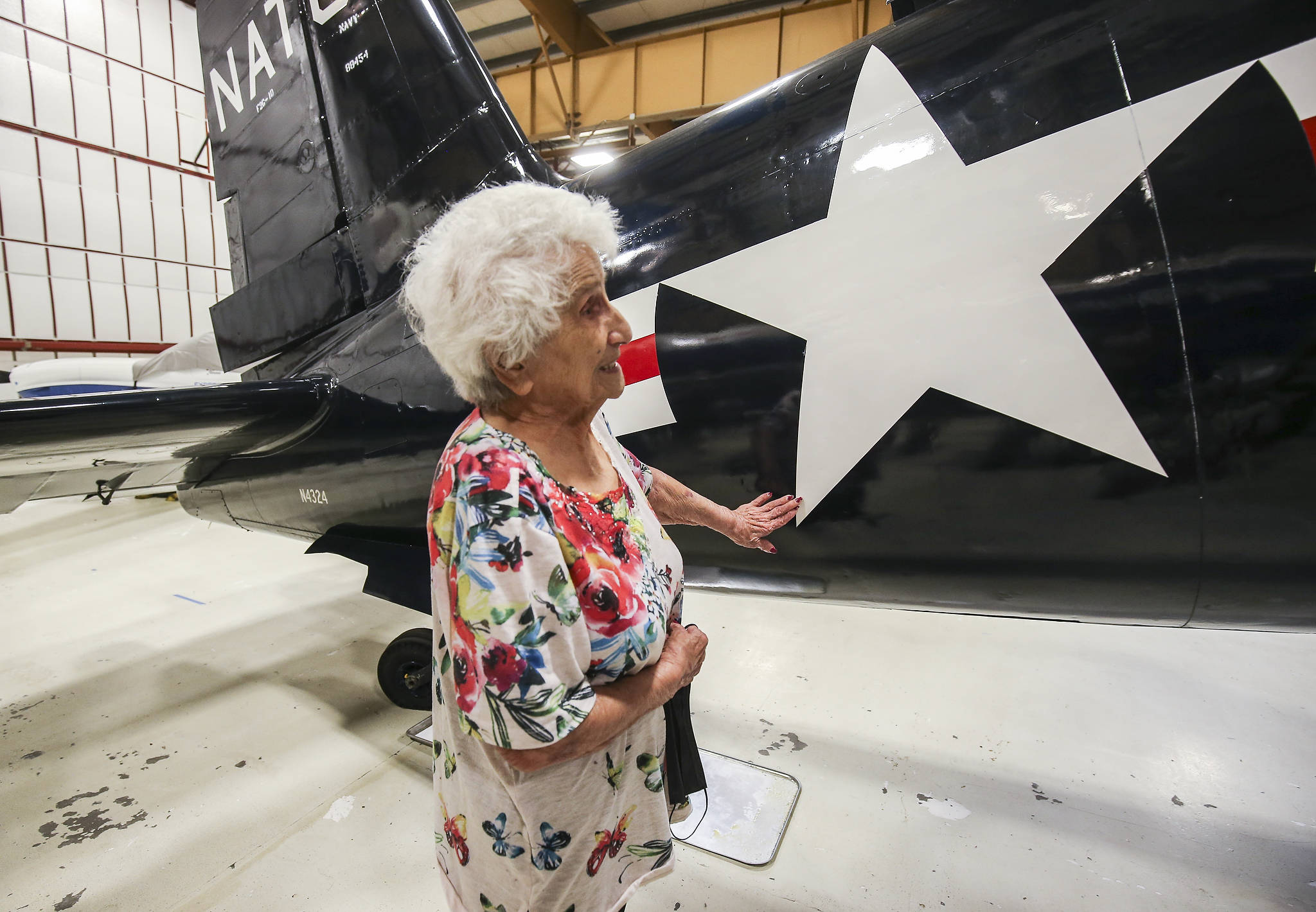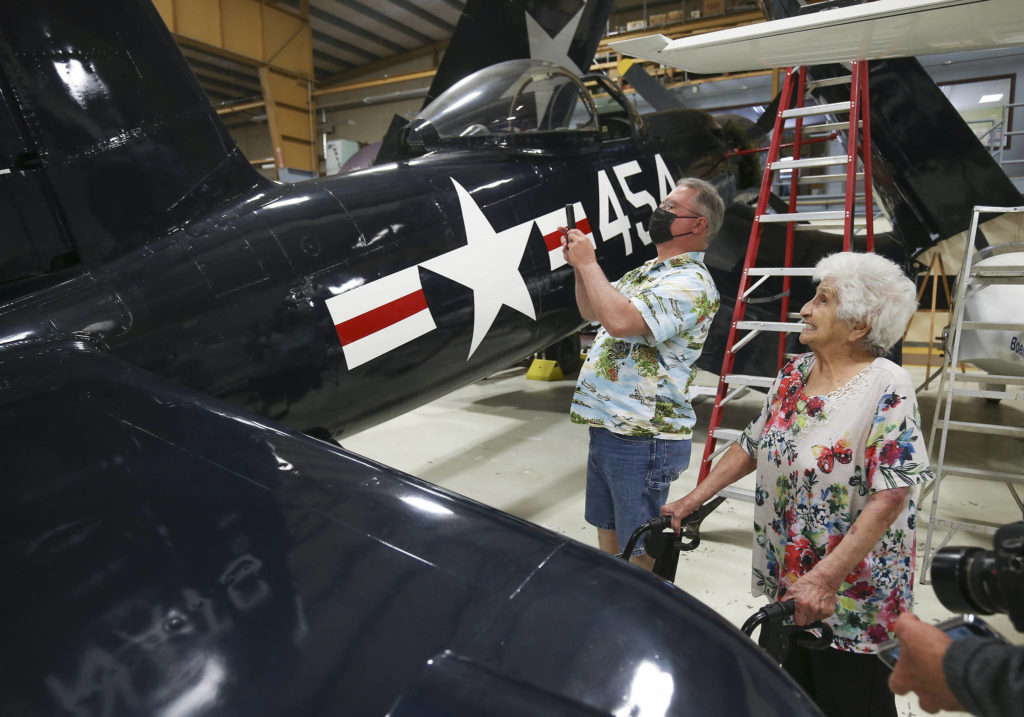EVERETT — When Helen Vaudrin was assembling American fighter planes in 1942, it felt like just a job to her. The real-life “Rosie the Riveter” couldn’t comprehend the historical significance of her work.
“We didn’t know these big planes were going to fly one day,” said Vaudrin, a 100-year-old Monroe resident.
These days, those planes are remarkably rare, as are the women who built them. In a hangar at Paine Field on Wednesday, woman and machine were reunited nearly 80 years later.
Her family’s pride was obvious while visiting one of the planes she helped build. Vaudrin’s children are scattered across the U.S., but a handful of family members accompanied her to the Museum of Flight’s Restoration Center and Reserve Collection at Paine Field.
For the first time since World War II, Vaudrin saw a late-war Goodyear F2G-1 Super Corsair.
The model Vaudrin surveyed Wednesday is incredibly rare. Museum staff and her family believe it’s likely she helped build the one at the Restoration Center.
Vaudrin was one of the actual riveters for the fighter planes. Her grandson noted the exact part of the plane she was responsible for finishing.
Applying metal sheets that make the outside of an aircraft was the last step in the assembly process. It took two “riveters,” one working on the inside and another on the outside. Each rivet on the planes — small bolts that hold metal together — was secured by hand.
At the time, the aircraft was regarded as a bigger and more modern airplane, said Ted Huetter, senior manager of public relations and promotions for the Seattle-based Museum of Flight. It came out toward the end of the war, too late to see military service.
Until recently, Vaudrin didn’t know which planes she built.
Her grandson, a huge military history buff, did some research. He learned which planes she helped assemble, and one model was at the Museum of Flight in Seattle.
In 2018, John Stefanov brought his grandmother to see the F4U Corsair. Family members took pictures of Vaudrin near the aircraft, and staff began asking her questions about her work during the war.
Stefanov and Huetter kept in contact. Wednesday’s tour was months in the making, after Vaudrin’s 100th birthday in December. The museum doesn’t get many visits these days from real-life Rosies, Huetter said.
The women who kept the economy from crumbling during World War II would be Vaudrin’s age, if not older.
Barbara Stefanov, Vaudrin’s oldest daughter, was a baby during World War II. She was too young to remember much from that time, but Vaudrin has shared a lot of stories with her.
“She was a very strong woman,” Barbara Stefanov said of her mother.
In 1942, Vaudrin was in her early 20s and a single mother. She heard the Goodyear Aircraft Corp. was hiring women. She applied and earned “enough to live on.”
Vaudrin often woke up at 5 a.m. to take the bus to the Akron, Ohio, facility, transferring twice on the way. She worked 10-12 hour shifts, six days a week. Sometimes her shifts were at night.
“It was me and her,” remembered Barbara Stefanov. “She took care of me and went out to work.”
When the war ended, men returned home and expected the entire female workforce to gladly and willingly leave their jobs. That wasn’t the case. One of Barbara Stefanov’s memories of her mother was Vaudrin telling her that the days of women staying in the kitchen were over.
Katie Hayes: katie.hayes@heraldnet.com; Twitter: @misskatiehayes.
Katie Hayes is a Report for America corps member and writes about issues that affect the working class for The Daily Herald.
Talk to us
> Give us your news tips.
> Send us a letter to the editor.
> More Herald contact information.






























